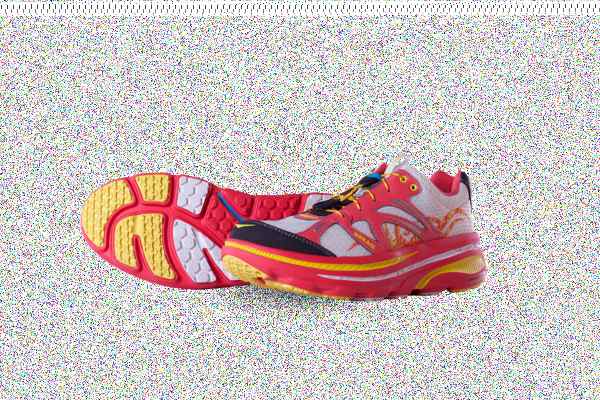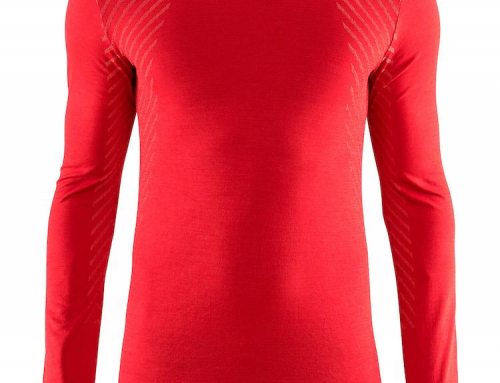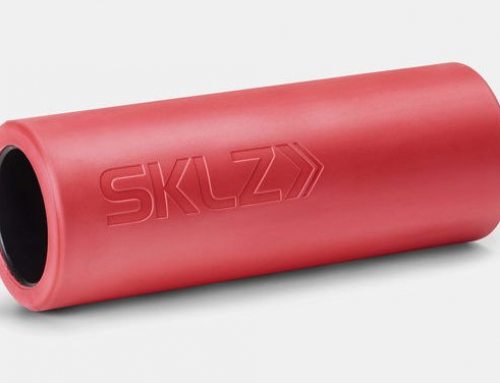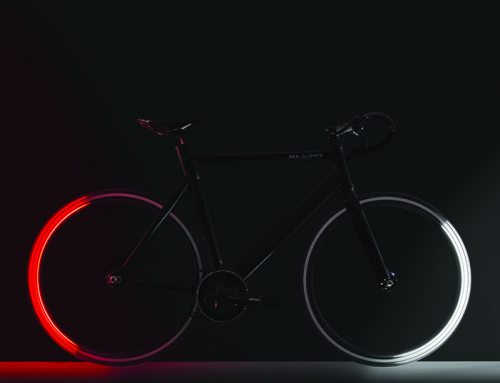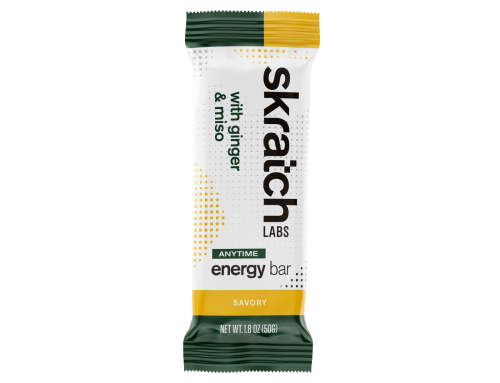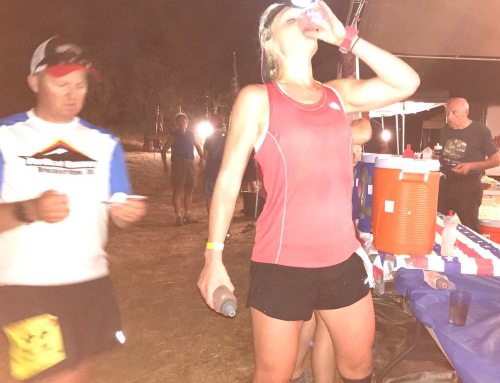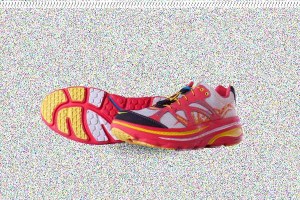
By Cid Cardoso, Jr.
I’ve been a fan of Hoka running shoes now for probably more than three years. Since I first put them on for a trial run, at the urging of triathlon guru and Slowtwitch founder Dan Empfield, I have been a convert. Maybe it’s age, or maybe it’s too many miles and too many Ironman races, but when I wear the Hokas, my legs just feel better (during and after runs). I’ve been doing this long enough to know when something just works. There is that subtle yet undeniable feeling that it was the right choice of equipment. It is even more apparent when we try something else, and then go back to the favorite gear or shoe. For my long runs and long races, the Hoka Bondi B is my shoe of choice.
Still, the look of Hoka One One shoes amazes me. I’ve wondered if they purposefully tried to make the shoe as different and as “monstrous” as possible in order to highlight its unique technology, or if the technology itself left no way around its boxy look. Regardless, I’ve always believed that function trumps fashion so until they make them sleeker looking, we’ll just have to deal with it.
After the success that I had with Hoka Bondi Bs, I decided to try other models. I tried the Stinson Evo Trail next but had mixed feelings. I liked the more curved last but the midsole felt stiffer and the shoe heavier, even though Hoka claims the Stinson Evo weighs 10.4 ounces and the Bondi Bs weigh 11 ounces (at a size 9). The more aggressive outsole provides better traction on trails and doesn’t wear out as fast. Yet they just didn’t feel as soft and springy as the trusty Bondi Bs, even on the trails.
Next, I turned to the Bondi S. These appealed to me since they are part of the Bondi family. They have a similar look and feel, but are supposed to be lighter and faster; the “S” is for “speed.” Upon my first inspection, the Bondi S looks almost identical to the Bondi B in construction and last. The upper is very similar in how the leather overlays are placed over the mesh and how it’s globally wrapped by the oversized midsole. The Bondi S, however, is easily identifiable by its bright red midsole, red and yellow highlights and flames and the words” HOKA one one” written on its side.
As you look deeper into their spec sheets, though, you will notice that the Bondi S platform is not as wide as the Bondi B and the patented “bucket seat” is not as recessed (20mm vs. 30 mm). The tongue is significantly thinner and made from a lighter weight material and the shoe comes with a quick lacing system. The result is a claimed weight of 9.5 ounces.
Unlike the Stinson Evo Trails, I liked the Bondi S from the get-go. I had that gut feeling that this was the right shoe for me. The soft midsole, smooth ride and feather weight feel were all there. In fact, I didn’t feel too much of a difference between the B and the S models, with the exception of the shoe laces. I did not like the Bondi S’s quick lacing system at all. The quick laces are much thinner than regular laces. I guess they were made to slide easier through the eyelids, but they are so thin that they hurt my fingers as I pull them. Furthermore, the locking mechanism comes loose during my long runs, causing me to stop and adjust periodically.
Hoka is not the first running shoe company to incorporate speed lacing systems into their shoes, and they are certainly not the first to fail at providing a better lacing system than conventional shoe laces. I wish that they had partnered with Yanks or Xtenex to provide quicker lacing systems that work properly. Better yet, I wish they had not provided speed laces at all. Leave that choice to customers and specialty stores. At least Hoka had the good sense to include a pair of regular laces in the box, which I changed to after a few runs. Note that the speed laces provided are so funky that they are sewn together in a loop so I had to cut them in order to remove them.
The fact that I didn’t feel much of a difference in comparison with the Bondi B’s intrigued me. My feeling was that if I can get the same feel but at a lighter weight, then what’s not to like? But the weight also didn’t feel different, so I decided to actually weigh both models. On the first scale I used, my size 12 Bondi S weighed 14 ounces, exactly the same as a pair of Bondi B size 12. On the second scale, once again they were both the same, 0.85 lbs. I suppose that a more sensitive scale may show a slight difference in weight, but the real weights are very similar. Speaking of size, the Hokas now fit fairly true to size, unlike their models from two or three years ago, which used to run small. I wear a size 12 in the Brooks Pure Project Flow, for example, and I wear a size 12 in both the Bondi B and the Bondi S.
In trying on the new Bondi B model, I did notice a difference in the fit between the two shoes. The new Bondi B’s use an upper with a looser, more porous mesh. This causes the fit to be a little roomier than previous Bondi B models or the Bondi S model. This actually did not work as well for me. My foot is not that wide so the snugger upper of the Bondi S felt better.
The bottom line is that the Bondi S is a very similar shoe to the Bondi B. I would recommend trying both on to see which is a better fit. However, if you’re happy with one of them, don’t sweat about having to have the other. The choice may also be dictated by availability, as Hoka’s overwhelming popularity has caused demand to be much higher than supply for some time. Their recent acquisition by Decker Outdoor Corporation (owner of brands such as Teva and UGG) should help resolve the availability issue.
If you’re new to Hokas, I definitely recommend test-riding a pair. This shoe has been a game-changer for numerous runners, some of whom couldn’t run more than an hour due to various pains and are now running half-marathons and marathons. As I’ve said before, the natural running revolution has brought a lot of positives to the running shoe industry: the focus on form, cadence, not over-striding, and minimizing the heel-to-toe drop. Even though minimalist shoes are still popular, I find that for longer distances, the benefits of cushioning and shock absorption (along with a minimal drop) far outweigh weight savings or further biomechanical improvements achieved from a shoe with no midsole.
So maybe it’s not complicated: More is better. As the little girl in the AT&T commercial says, “We want more, we want more, like we really like it, we want more” … cushioning.
# # #
Cid Cardoso, Jr., owner of Inside Out Sports, has been doing triathlons for more than 20 years. In October 2011, he competed in his 26th Ironman – his eighth appearance at Kona. A veteran of ultramarathons, he has competed in Team RAAM twice. He has seen equipment evolve with the sport and continues to test new products to assess their impact on performance. He trains, works, and resides in Cary with his wife, two daughters, and son. You can reach him at cidjr@insideoutsports.com.


